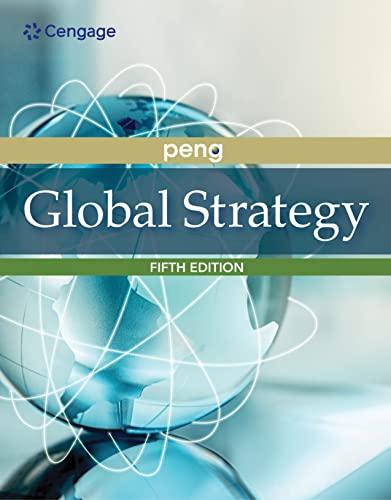Question
Compassion International is a faith-based charity that runs child sponsorship programs in developing countries. Donors in developed countries sponsor a child by donating a certain
Compassion International is a faith-based charity that runs child sponsorship programs
in developing countries. Donors in developed countries sponsor a child by donating a
certain amount every month (about $40 typically). Compassion uses this money for
several projects to aid the children, often including providing access to health care,
constructing schools, providing uniforms for children, and in some cases providing cash
directly to the households.
Compassion focused on the poorest kids in local communities. Some of the screening
criteria are:
- Children from low-income households
- Orphans are prioritized
- Children of age 13 and above are not eligible. Younger children are given higher
priority, starting from kindergarteners.
- All sponsored households must allow their children to attend Christian education
classes (even though the children don't have to be Christian)
Being interested in evaluating the long-term effects of these programs, Wydick, Glewwe, and Rutledge (2013) conducted surveys in 2008-2010 in 6 countries (Bolivia,
Guatemala, India, Kenya, the Philippines, and Uganda), in order to examine the effect
of programs that took place from 1980-1992. Thus, by the time of the follow-up survey, the sponsored children were in their mid-20s to mid-30s. The way this worked is that
Compassion entered a new area in a certain year—so that before that year, there was
no child sponsorship program.
(a) Why is it challenging to evaluate the impact of such a program? Discuss how
you identify the treatment group and control group.
(b) Tracking respondents for follow-up surveys is a concern in any evaluation study.
Explain how such "attrition" issues would be particularly a big worry in this study.
(c) Ignoring the attrition issue, imagine that the researchers constructed a study
that compared adults who were sponsored as children to other adults of the
exact same age who was not sponsored. Would this be a good estimation?
strategy? If not, explain what types of biases this would entail.
(d) Explain the rationale of this identification strategy. (Extra credit: Explain the
potential downsides of this identification strategy)
The following table shows the outcomes between siblings. The key comparison is between Column 1 (for those who were sponsored) and Column 4 (for their siblings who were not sponsored).
(f) What possible problem would spillovers create for this identification strategy?
(Hint: How would the non-sponsored siblings in sponsored households have
been indirectly benefitted from the program?)
Step by Step Solution
3.44 Rating (151 Votes )
There are 3 Steps involved in it
Step: 1
a Evaluating the impact of such a program poses several challenges Firstly there may be confounding variables that affect the outcomes making it diffi...
Get Instant Access to Expert-Tailored Solutions
See step-by-step solutions with expert insights and AI powered tools for academic success
Step: 2

Step: 3

Ace Your Homework with AI
Get the answers you need in no time with our AI-driven, step-by-step assistance
Get Started


